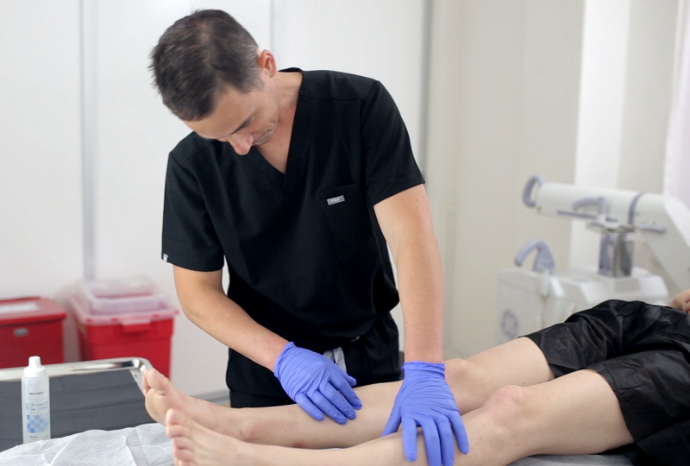If you’ve noticed visible veins, leg swelling, or a heavy sensation in your legs, you might be considering a visit to a vein clinic. But before making the appointment, you probably want to know: what does a vein clinic do, and what will happen during your first visit? Whether you’re dealing with varicose veins, spider veins, or more serious vascular issues, understanding what to expect can ease anxiety and help you prepare for effective treatment.
In this guide, we’ll walk you through every step of your initial appointment, especially if you’re seeking Vein Treatment Long Island options. You’ll learn how vein specialists assess your condition, what diagnostic tools they use, and the treatment plans they may suggest—all with your comfort and care in mind.
What Happens When You First Arrive?
When you arrive at a vein clinic, expect a warm, professional, and welcoming environment. Most modern vein clinics, especially those offering Vein Treatment Long Island, focus on patient comfort and provide a relaxing atmosphere.
You’ll start by filling out patient intake forms, which include your medical history, current symptoms, any past vein treatments, medications you’re taking, and lifestyle habits. Be honest and detailed—this information helps the specialist tailor the best treatment plan for you.
What Does a Vein Clinic Do in the Initial Consultation?
Your first consultation involves a thorough discussion with a vein specialist. This is a key moment to ask questions and talk about your symptoms. Common issues patients mention include:
- Visible varicose or spider veins
- Swelling, throbbing, or itching in the legs
- Heaviness or fatigue in the lower limbs
- Night cramps or restless legs
- Skin discoloration or ulcers near the ankles
Your doctor will want to know when your symptoms started, how often they occur, and what makes them better or worse. This conversation is crucial in helping the physician understand the severity of your condition.
So, what does a vein clinic do at this stage? Simply put, they evaluate your symptoms, lifestyle, and medical history to determine if further tests are necessary.
How Is the Physical Exam Conducted?
After the initial discussion, a physical examination will follow. The vein specialist will visually inspect your legs, especially when you’re standing. Varicose veins often bulge when pressure is applied, so you may be asked to stand or move in specific ways to better assess vein function.
The physician may gently palpate your legs to check for swelling, tenderness, or skin changes. Sometimes, early venous issues are not visible on the surface, which is where imaging comes in.
Will You Need a Vein Ultrasound?
Yes, in many cases. One of the most critical diagnostic tools used during your first visit is duplex ultrasound imaging. This non-invasive test shows real-time images of the blood flowing through your veins and can reveal whether your veins are functioning properly.
If you’re visiting a trusted Vein Treatment Long Island clinic, you’ll likely undergo this exam on-site. The ultrasound technician or vascular specialist will apply a gel on your skin and use a handheld device to view the deeper veins. It’s painless and typically takes 20–30 minutes.
This imaging allows the doctor to identify venous reflux, blood clots, or blockages that aren’t visible from the outside. It’s an essential part of determining whether you need medical treatment or lifestyle adjustments.
How Are Treatment Options Discussed?
Once your exam and imaging results are reviewed, your vein doctor will walk you through the findings. This is where the clinic provides the greatest value—offering customized solutions based on medical evidence and your personal comfort level.
Depending on your condition, treatment options may include:
- Conservative therapies: Compression stockings, elevation, exercise, and dietary changes.
- Minimally invasive procedures:
- Sclerotherapy: Injection of a solution that closes off small veins.
- Endovenous laser ablation (EVLA): A laser fiber seals faulty veins from the inside.
- Radiofrequency ablation (RFA): Uses heat generated by radiofrequency to treat larger veins.
- VenaSeal™: A medical adhesive that seals the vein shut.
Your vein specialist will explain each method, discuss success rates, potential side effects, and recovery times. Most treatments can be performed in the clinic, often with little to no downtime.
How Does Insurance Play a Role?
Another common concern during your first visit is cost and insurance coverage. The good news is many vein treatments are covered by insurance, especially if your condition causes pain, swelling, or other medical issues.
The clinic’s administrative staff will help verify your insurance benefits and guide you through pre-authorization if needed. Make sure to bring your insurance card and any referral paperwork during your visit.
Will You Receive a Treatment Plan?
Absolutely. Before you leave the clinic, the vein specialist will provide a personalized treatment plan. This may include:
- A schedule for treatment sessions
- Instructions for lifestyle changes
- Guidance on wearing compression stockings
- Follow-up appointments and progress evaluations
If your condition is mild, the doctor may recommend monitoring your veins and returning for a follow-up visit if symptoms worsen.
Why Choose a Specialist in Vein Treatment Long Island?
When it comes to vein health, experience matters. Vein clinics that specialize in Vein Treatment Long Island have access to cutting-edge technology and are staffed by board-certified vascular specialists. These experts understand the unique needs of each patient and tailor care based on the latest evidence-based practices.
Moreover, Long Island clinics often offer flexible scheduling, same-day ultrasounds, and convenient locations—making it easier for patients to get timely and effective care.
What Does a Vein Clinic Do After Your First Visit?
After your initial appointment, the clinic typically follows up with a phone call or email to check on how you’re doing. If you’ve had a procedure done, they’ll schedule a post-treatment ultrasound or consultation to ensure your veins are healing properly.
In some cases, patients require multiple sessions or a combination of treatments. Rest assured that your clinic will monitor your progress and make adjustments as needed.
Final Thoughts: Take the First Step to Healthier Legs
If you’re dealing with visible veins, discomfort, or leg fatigue, don’t ignore the symptoms. Visiting a specialized vein clinic can provide clarity, peace of mind, and effective solutions. Now that you know what does a vein clinic do, your first appointment shouldn’t feel intimidating—it’s your first step toward improved circulation and quality of life.
Whether you live in Nassau, Suffolk, or anywhere else in the region, expert Vein Treatment Long Island centers are ready to help you feel better and look your best.
Taking control of your vein health begins with just one visit. So why wait? Schedule your appointment today and discover the difference professional care can make.






